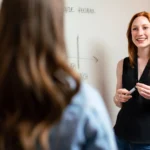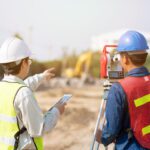With over 60,000 years of connection to country, Aboriginal and Torres Strait Islander community members throughout Australia have had a deep, technical and scientific traditional knowledge of the environment. This knowledge includes an understanding of land management practices, for resilience to natural disasters.
Government-led environmental policy and practice has historically changed and hindered First Nations communities to use their traditional practices to care for the land – and prepare for natural disasters. And today, our changing climate is also creating more frequent and more severe weather events
Climate predictions mean this challenge will continue to get worse, so it is vital that we enable First Nations communities to lead disaster management planning, not plan it for these communities.
Living on vulnerable land
Aboriginal and Torres Strait Islander people are over-represented in people affected by a natural disaster. The New South Wales floods of 2022 saw Aboriginal and Torres Strait Islanders disproportionally effected and underfunded in recovery, compared to white Australia. This is a major challenge in northern Australia.
Geographically, remote areas such as our country’s north, typically get the extreme ends of climate events. For example, the northern savanna regions of Australia tend to see late season bush fires that burn extensively from the lack of natural or manmade barriers, such as rivers or roads. The area is also more prone extreme weather events like cyclones.
Aboriginal and Torres Strait islander people represent 14% of the North Australia population, with many living in remote areas. Australia-wide, around 61% of Indigenous Australians live outside major cities, and nearly 60% of the very remote Northern Territory population is Indigenous Australians. These regional and remote areas are subject to natural disasters distinct from urban areas.
Unfair disadvantages
The ability of any community to be resilient to disasters highly depends on the health and interpersonal relationship of the individuals that make up the community. Aboriginal and Torres Strait Islander people disproportionately experience poorer health and wellbeing outcomes. This was evident with the impacts of COVID-19. Additionally, long-term social and economic disadvantage decreases an individual’s cognitive ability to be resilient.
Remote and very remote areas also have less access to emergency infrastructure in the event of a disaster, such as cyclone shelters and fire-fighting equipment. So, the management and recovery options are limited. Historically, remote communities have less access to funding, emergency management training and the logistics of supporting these communities in these efforts are challenging.
How is emergency management addressed now?
The current strategy the national government uses to address emergency management is ‘National Disaster Risk Reduction Framework.’ This strategy shows that the Australian government wants to and understands why it must engage with Australian Aboriginal communities. It also shows that effective co-design is key in effective emergency management.
The execution and layout of the strategy has been widely criticised for not being effective for the communities is it supposed to work with. While the strategy exists, the implementation remains underfunded.
One of the key points of tension in the strategy is the role of police as the contact point for emergency management. However, in some communities there is a longstanding distrust of law enforcement officers. It also requires a fly-in fly-out approach for emergency management officials to reach remote communities, where they then need to apply top-down approaches without enabling Aboriginal and Torres Strait Islander communities to use their own knowledge and lead.
Engagement
There are engagement methods that allow First Nations communities to lead disaster management planning and resilience with their own knowledge. This means:
- Doing with, not doing to – “Nothing about us without us”
- Engaging widely
- Engaging the right people
- Building relationships
- Creating trust
Doing to or doing with
Learning to co-exist with environmental hazards: Community and societal perspectives and strategies encapsulates the ways disaster management and resilience can be undertaken ‘you can do to them, for them or with them.’ Historically, Aboriginal communities have had policy responses done to them with dehumanising impacts that invalidate the knowledge and culture. When communities feel left out of the process in creating and maintaining a disaster management strategy, there is a higher chance of the strategy failing.
There is no way to integrate the individuality of each local structure without individual engagement. Each First Nation community brings its own traditional risk knowledge that has worked for countless generations. Emergency management should capitalise on what has already worked, not what western policy thinks will work.
Engaging widely
Limited budgets and time are a common barrier for engaging with only a few representatives in a community. This is problematic to the community, the individuals engaged with, and the engagement itself. One Elder described subsequent impacts on the relationships between the few people engaged and their wider community.
Engaging with the right people
Within each Aboriginal and Torres Strait Islander community, it is important to build relationships and engage with representatives accepted by the wider community with the appropriate cultural knowledge. Participants of consultation in 2016 around the Northern territory expressed that if you want to speak about bushfires speak to “fire men, if they want to talk about cyclones they should talk ‘cyclone people’ and if whirly whirly, they gotta speak with the right people, hold that relationship, story, ceremony and song’.
Engaging with any individual is not seen as engaging at all, as different people have different relationships to the hazards and hold different knowledge. This is where it is important to ask the correct questions to find the correct people.
Asking the right questions
“How do you want us to work with you?; how do we connect with your structures?”
There is clearly a wrong and right way to engage to give ownership of disaster management back to the Indigenous communities. The tough engagement is the most important. The conversations that you must have to gain knowledge can be difficult, but they become easier when you build a relationship and ask the right questions. An equitable engagement approach helps to elevate First Nations voices in any planning effort. This approach is explored in the Articulous Academy course, Diversity, Equity and Inclusion.
The goal of engagement is not to create emergency management for Aboriginal and Torres Strait Islander communities, it is to listen and learn how their knowledge can be incorporated into disaster management planning. Recognising that resilience is connected to the overall wellbeing of a community, this effort cannot be done in isolation from other government support. Bringing land management back to First Nations people allows disaster prevention and recovery to empower and reflect cultural values, in turn accruing overall health and social benefits.






